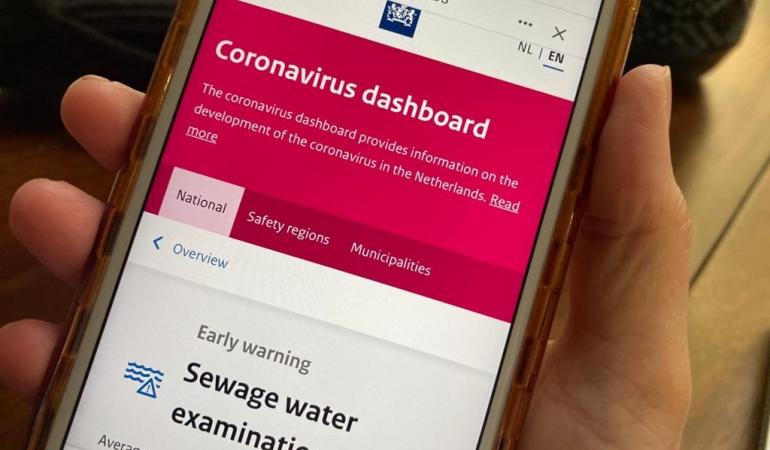
Starting this week, the measurement results from the sewage research in various municipalities and security regions can be compared on the Coronavirus Dashboard. The number of virus particles per 100,000 inhabitants is now also displayed. This means that the sewage research results can now be compared with the medical indicators on the dashboard.
Some people who are infected with the novel coronavirus may have traces of the virus in their faeces. These traces end up in the sewer via the toilet. People who are infected but are not yet showing any symptoms, and have therefore not been tested (or not yet), may also have traces of the coronavirus in their faeces. As a result, sewage research is ideally suited to facilitate early detection.
Since 7 September, RIVM has been receiving samples of untreated sewage from all of the over 300 sewage treatment plants across the country, which are part of the 21 water boards in the Netherlands; the samples are provided one or more times a week. In the RIVM lab, those sewage samples are examined to detect the presence of genetic material (RNA) from the novel coronavirus. Using those results, it is possible to map locations where the number of virus particles in the sewage is higher or lower. The results are displayed on the Coronavirus Dashboard provided by the national government.
New format displayed on Coronavirus Dashboard
Starting on 3 November, the sewage measurements are displayed on the dashboard per 100,000 inhabitants. By presenting the research results in this format, the figures can be compared to other indicators, such as the number of people who tested positive for COVID-19, since those figures are also displayed per 100,000 inhabitants. This also makes it easier to compare sewage measurements from different municipalities and security regions. The figures are now also corrected for the amount of sewage that flows past the sampling point, since that varies significantly per location.
Coronavirus monitoring in sewage takes place in close cooperation with the Union of Water Boards and the 21 regional water boards.